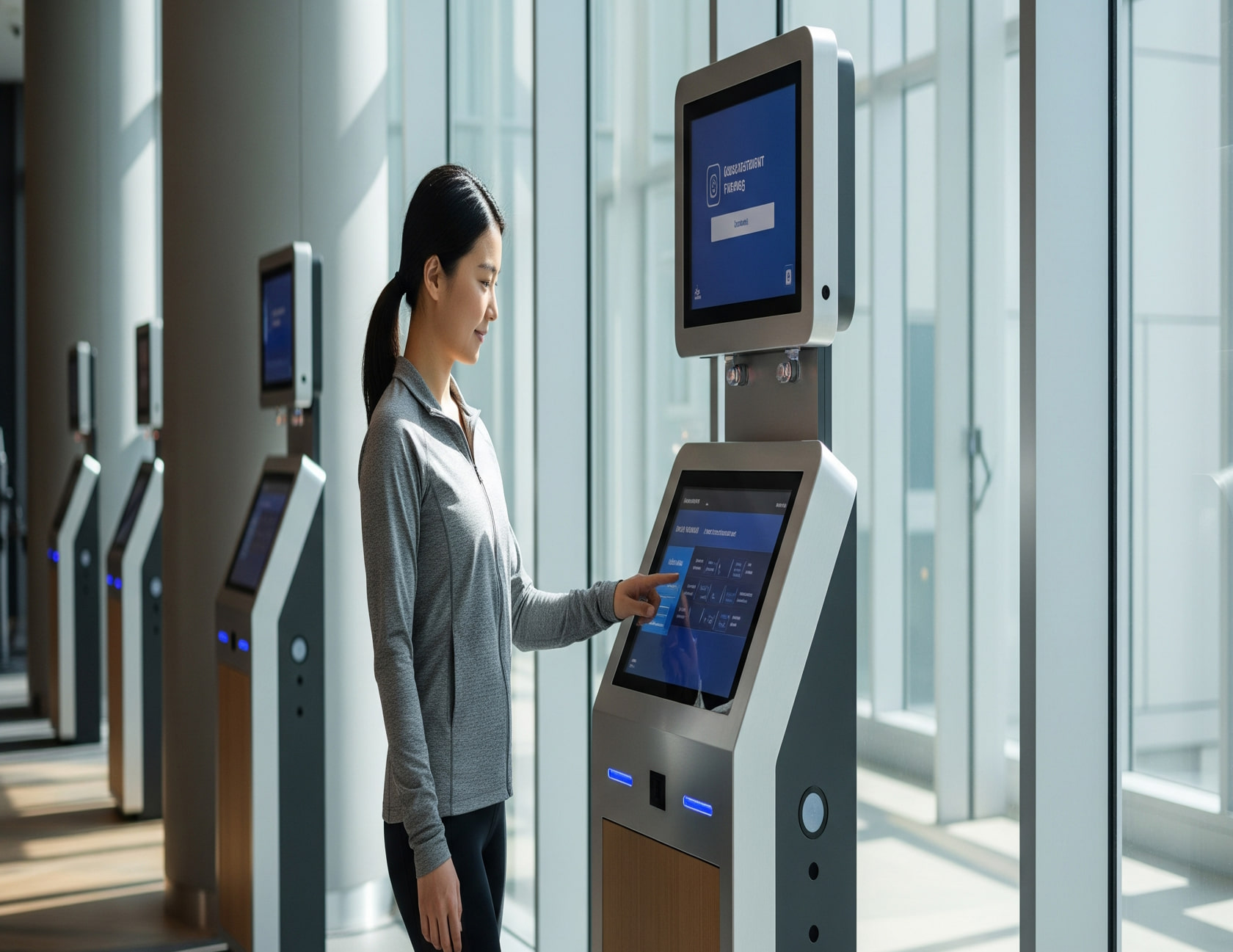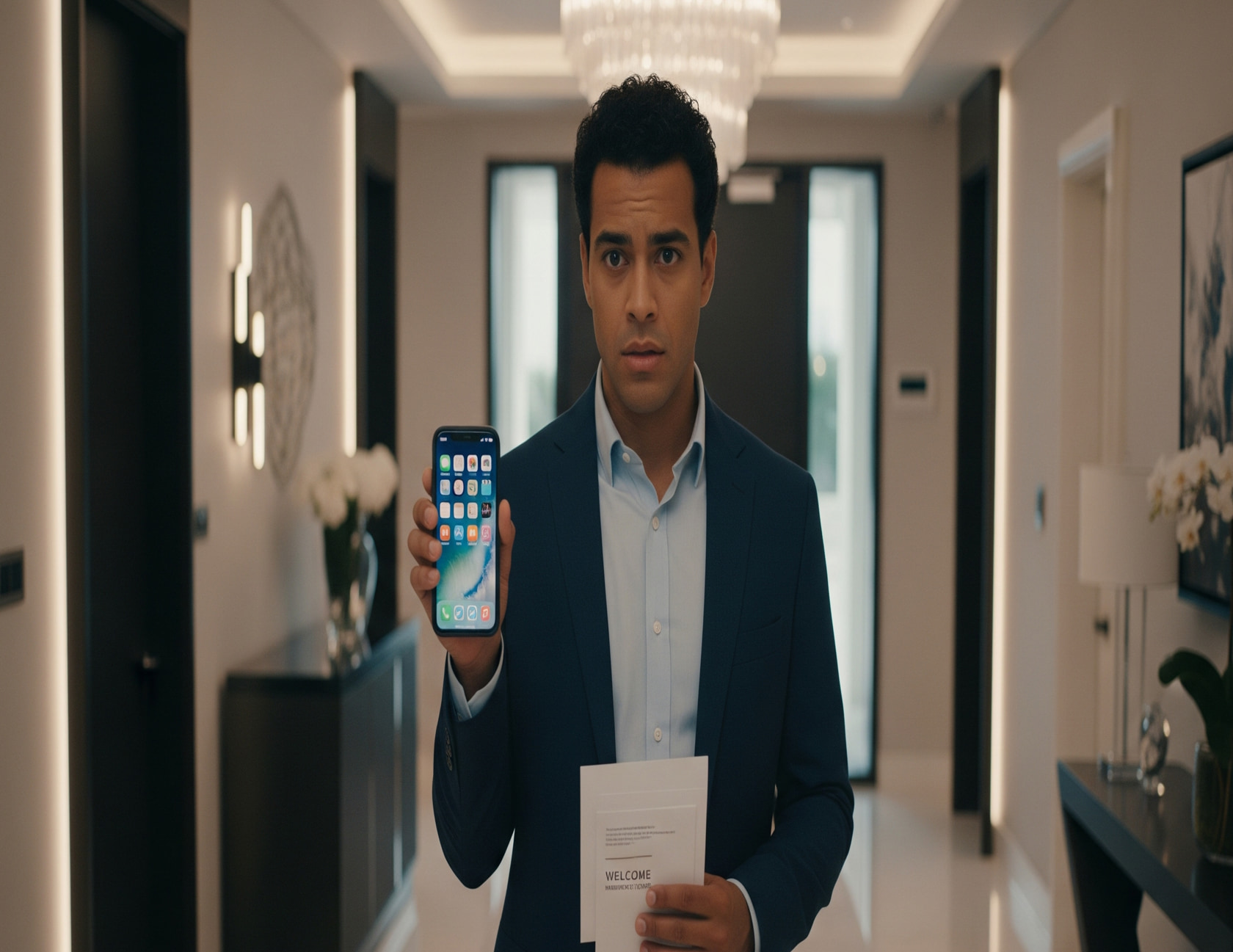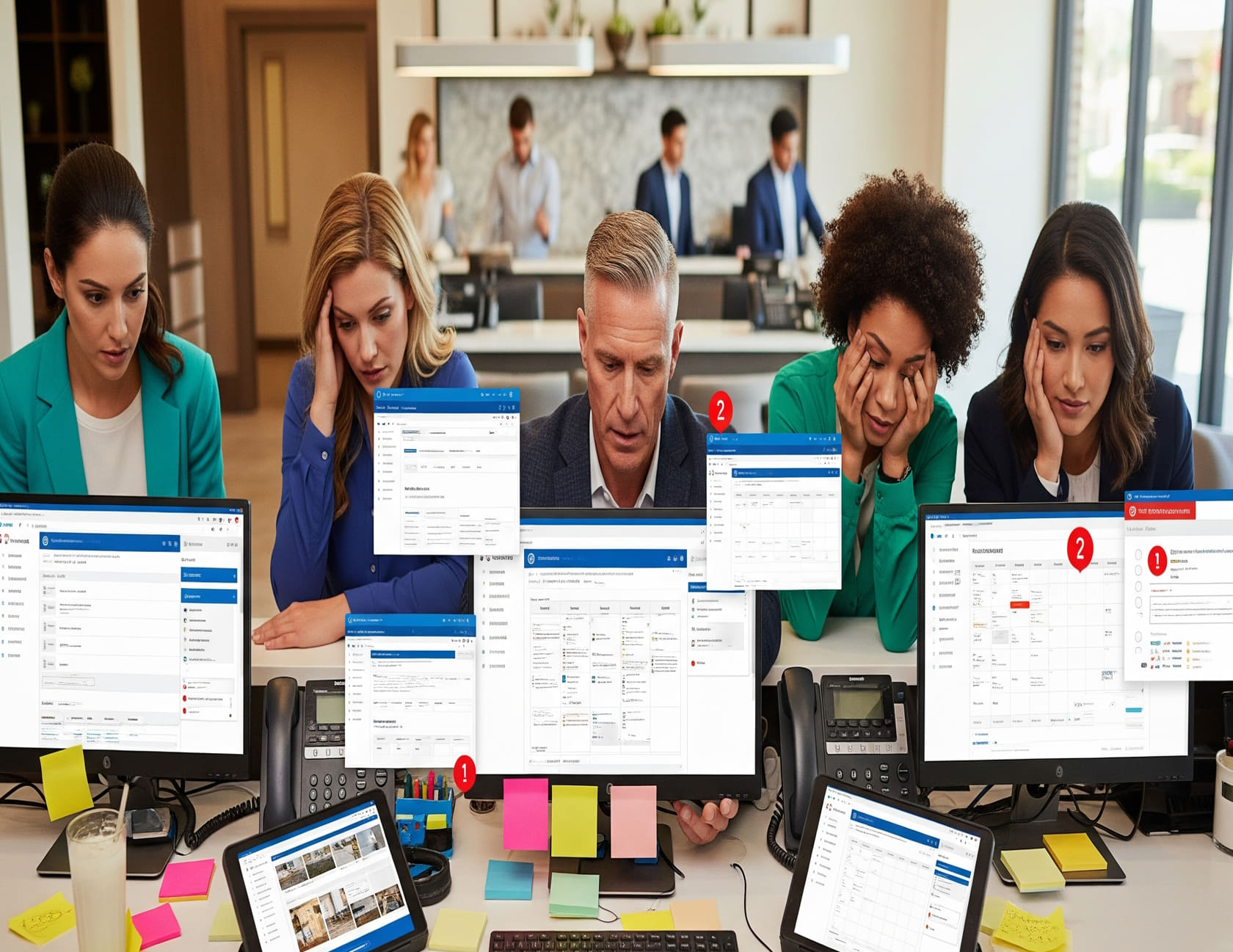
📌 Key Takeaways
Consolidating Multiple Systems Delivers Measurable Impact: Properties successfully transitioning from 6+ fragmented resident-facing portals to unified platforms report dramatic efficiency gains, with one Chicago property manager noting significant complexity reduction and enhanced user experience for both residents and staff.
The Hidden Costs of App Fatigue Are Substantial: Fragmented operations create a cascade of inefficiencies affecting both teams and residents - from delayed response times and expensive multi-system training requirements to reduced engagement with community services and compromised premium resident experiences.
Unified Platforms Enable Predictive Management: Single-source data integration transforms reactive property management into proactive operations, revealing resident behavior patterns, maintenance scheduling opportunities, and service utilization insights that were previously hidden across isolated systems.
Implementation Requires Strategic Framework Thinking: Successful transitions demand systematic evaluation across four critical areas: core integration capabilities with existing property management software, centralized communication management, amenity coordination tools, and comprehensive analytics reporting.
Operational Excellence Creates Strategic Career Advancement: Mastering unified platform implementation builds foundational skills in data-driven decision making and operational efficiency that become invaluable assets for advancing into regional or director-level positions where strategic thinking drives organizational success.
The comprehensive evaluation toolkit and real-world case studies detailed in the full framework provide the specific implementation strategies and assessment criteria needed to transform fragmented operations into streamlined, revenue-generating unified systems.
Managing a luxury multifamily property feels increasingly like juggling digital chaos. One app for maintenance requests, another for rent collection, a third for amenity reservations, and yet another for resident communications. Your team switches between six different platforms daily while residents struggle with their own collection of confusing interfaces. Sound familiar?
This fragmentation isn't just inconvenient—it's expensive. Every additional system creates friction, delays response times, and ultimately undermines the premium experience your residents expect from a Class A community.
The 'Before' State: The Hidden Costs of Fragmented Operations
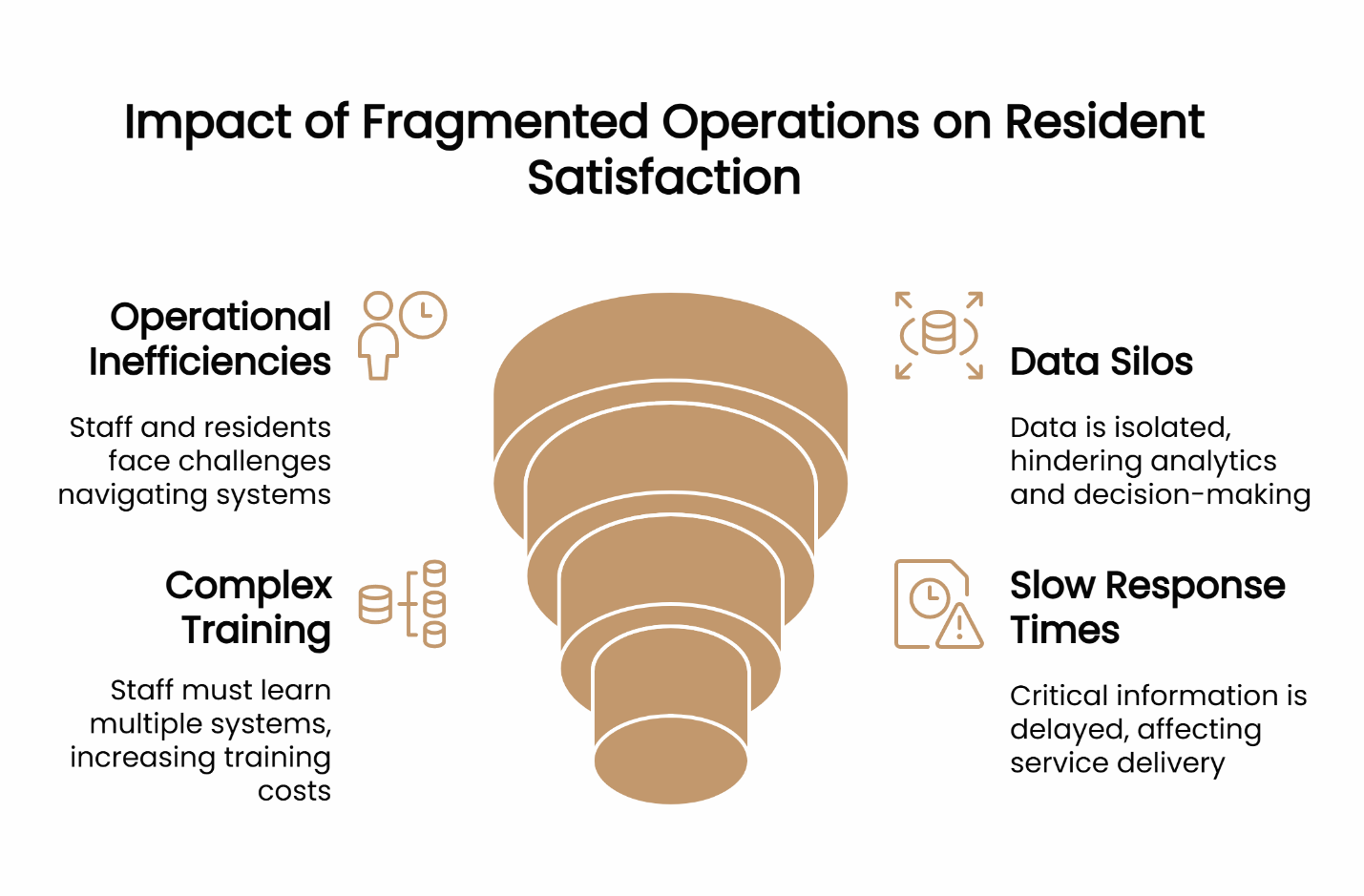
Property management teams using disconnected systems face a cascade of operational inefficiencies that compound throughout each day. App fatigue affects both staff and residents, creating resistance to adopting new tools and reducing overall engagement with community services.
Consider a typical Tuesday morning scenario. A resident submits a maintenance request through one portal, books a guest suite through another system, and messages the front desk via a third platform about package delivery. Meanwhile, your team member checks four different dashboards to understand what's happening across the property.
"We significantly reduced complexity and enhanced user experience by consolidating 6+ resident-facing portals into a single, easy-to-navigate platform, increasing efficiency for residents and staff alike," reports Optima Signature in Chicago.
The hidden costs extend beyond time management. Fragmented data prevents meaningful analytics, making it nearly impossible to identify patterns in resident behavior or anticipate maintenance needs. Staff training becomes more complex and expensive when each new hire must master multiple systems. Response times suffer when critical information lives in isolated silos.
Most significantly, this operational chaos directly impacts resident satisfaction. Premium-paying residents expect seamless, hotel-like service. When simple requests require navigation through multiple touchpoints, the experience feels disjointed and unprofessional.
The 'After' Vision: A Day in the Life with Unified Operations
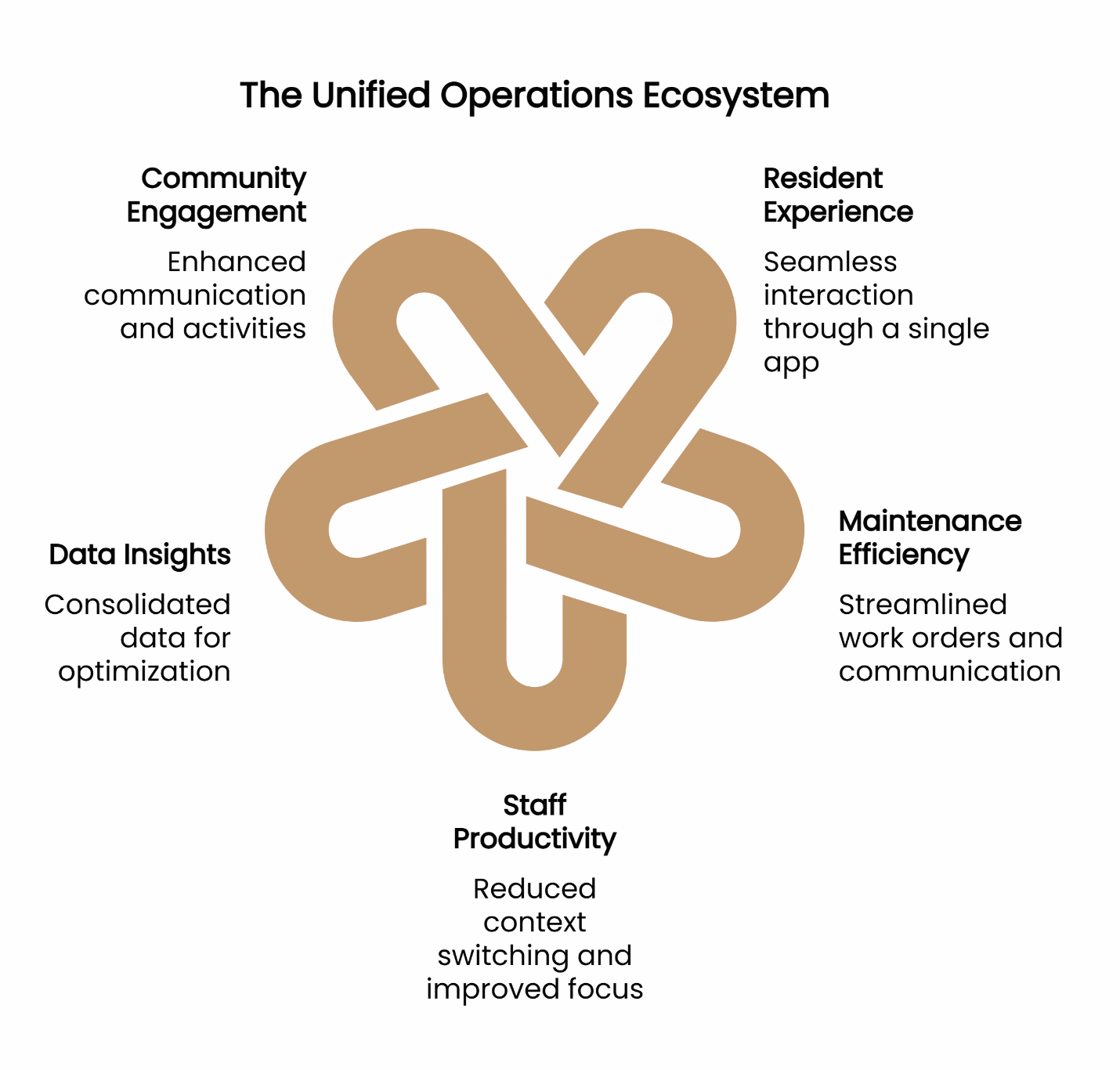
Imagine starting your workday with a single source of truth—one dashboard showing all resident interactions, maintenance priorities, and community activities. Every team member accesses the same real-time information, enabling proactive rather than reactive management.
Residents experience this transformation immediately. They open one beautifully branded app that handles everything from rent payments to yoga class registration. Maintenance requests include photo uploads and status tracking. Amenity booking happens instantly with automatic calendar integration. Community announcements reach everyone through push notifications.
Your maintenance team receives work orders with complete resident communication history attached. The front desk can instantly see which residents have packages, pending service requests, or upcoming move-outs. Streamlined workflows eliminate the constant context switching that drains productivity.
"ElevateOS Living saves our on-site teams so much time! Konrad has been amazing to work with," notes Andrea W, an Asset Manager who has experienced this transformation firsthand.
This unified approach creates compound benefits. Faster response times improve resident satisfaction scores. Consolidated data reveals optimization opportunities previously hidden across multiple systems. Staff can focus on relationship building rather than system management.
The 'Bridge': Implementing the Unified Operations Framework
Transitioning from fragmented operations to unified management requires a systematic approach that addresses technology, workflow, and cultural elements simultaneously.
Centralizing Communications and Requests
The foundation of unified operations lies in creating a single communication hub where all resident interactions occur. This eliminates the confusion of scattered messages across email, text, voicemail, and multiple app notifications.
Effective centralization includes automated routing based on request type, ensuring maintenance issues reach the appropriate team member while general inquiries go to the front desk. Integration with existing property management systems maintains data consistency without requiring complete system replacement.
Real-time status updates keep residents informed throughout the resolution process, reducing follow-up inquiries and demonstrating responsiveness. This transparency builds trust while reducing administrative overhead.
Streamlining Amenity and Service Management
Unified platforms excel at managing the complex scheduling and coordination required for modern Class A amenities. Residents can view real-time availability for fitness centers, conference rooms, and social spaces through intuitive booking interfaces.
Advanced systems integrate with access control, automatically granting entry permissions when reservations are made. This eliminates the manual coordination that typically creates bottlenecks around popular amenities.
Service provider management becomes significantly more efficient when integrated into the primary platform. Whether coordinating housekeeping, pet services, or personal training, centralized scheduling prevents double-bookings while maintaining service quality standards.
Gaining Actionable Insights from a Single Source of Truth
Perhaps the most transformative aspect of unified operations is the analytical capability that emerges from consolidated data. Instead of piecing together information from multiple sources, property managers gain comprehensive insights into resident behavior patterns, service utilization, and operational efficiency metrics.
These insights enable predictive maintenance scheduling, optimized staffing plans, and targeted resident engagement strategies. Understanding which amenities generate the highest satisfaction scores helps prioritize investment decisions.
"When everything works together in one platform, the result is simpler operations, happier residents, and a real impact on NOI," explains a recent analysis of unified platform implementations.
Your Evaluation Toolkit: The Unified Operations Checklist
Use this framework to assess potential platforms against your specific operational requirements:
Core Integration Capabilities
- Seamless connection with existing property management software
- Real-time data synchronization across all modules
- Single sign-on access for staff and residents
- Mobile-optimized interfaces for both iOS and Android
Communication & Request Management
- Centralized messaging with automated routing
- Photo and document attachment capabilities
- Status tracking with automated resident notifications
- Integration with maintenance scheduling systems
Amenity & Service Coordination
- Real-time availability calendars with booking functionality
- Access control integration for automated entry permissions
- Service provider scheduling and coordination tools
- Payment processing for fee-based amenities
Analytics & Reporting
- Comprehensive dashboard with key performance indicators
- Resident satisfaction tracking and trend analysis
- Operational efficiency metrics and bottleneck identification
- Custom reporting capabilities for stakeholder updates
Scalability & Support
- Multi-property management capabilities
- White-label customization options
- 24/7 technical support with dedicated account management
- Regular platform updates and feature enhancements
Moving from Operational Chaos to Strategic Command
The shift from fragmented to unified operations represents more than a technology upgrade—it's a fundamental reimagining of how premium multifamily communities deliver exceptional resident experiences while optimizing operational efficiency.
Success requires careful planning, stakeholder buy-in, and a commitment to change management that supports both staff and residents through the transition. Consider conducting pilot implementations in smaller property segments before full deployment.
The operational excellence you build today through unified platform implementation creates the foundation for tomorrow's strategic leadership opportunities. As the industry continues evolving toward portfolio-level management and data-driven decision making, the skills and insights gained from streamlining community operations become invaluable assets for advancing into regional or director-level roles where strategic thinking and operational efficiency expertise drive organizational success.

.avif)
